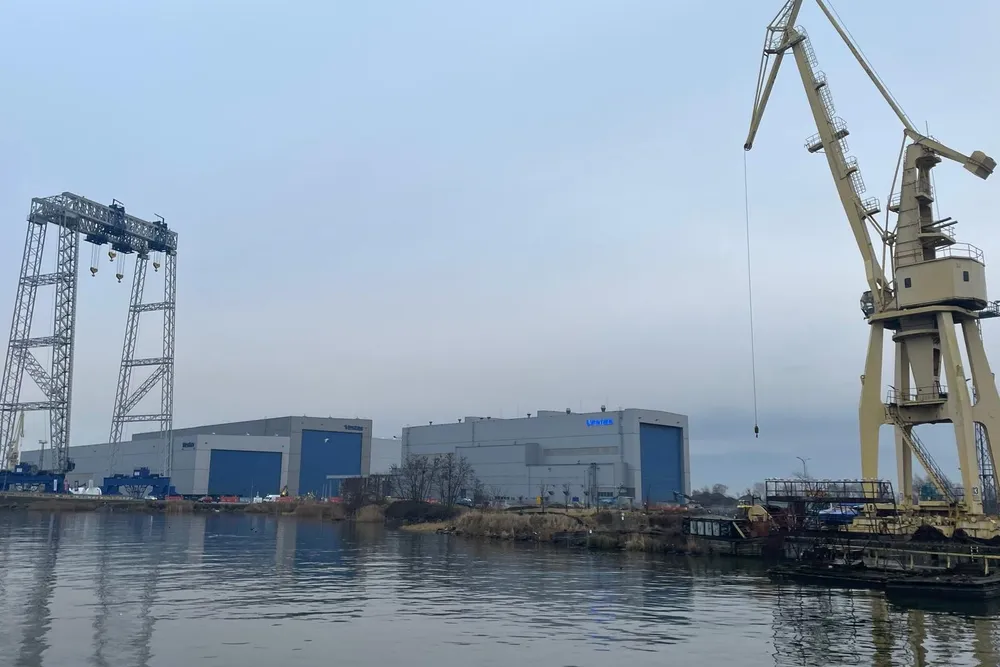'Offshore wind valley': how Europe's newest hub wants to rival Esbjerg and Hull
Investments by Vestas and Windar in Szczecin and Swinoujscie are transforming the industrial landscape of Poland's Baltic coast

The ports of Szczecin and Swinoujscie at the mouth of the river Oder are gearing up to become Europe’s latest offshore wind hub – not only for Poland but for the wider Baltic Sea region.
The Polish Wind Power Association PWEA even sees a potential for 33GW.
The company is also part of a consortium about to finish converting a 20.2-hectare area of a former bankrupt shipyard in Swinoujscie into a modern offshore wind installation terminal.
“Construction works are still ongoing, and the terminal is going to reach operational readiness in mid-2025,” Janusz Bil, president of Orlen Neptun’s management board, said at the recent Offshore Wind Ports Platform in Swinoujscie.
Pawel Novak, Orlen Neptun’s business development director and responsible for the commercialisation of the installation terminal, at the same event acknowledged that the offshore wind market in Poland is still at a very early stage.
That could also be observed during a tour for reporters through the Swinoujscie installation port area, where wide empty spaces, both at the quayside and inside modern warehouses, prevail and wait for Orlen’s first installation project.
The availability of space is, however, also an advantage.
“Orlen Neptune will be realising its offshore wind farm projects, and we also will be open for rental cooperation with other developers in installers, who will be interested in implementing offshore projects in the Baltic Sea,” Novak said at the offshore ports event that included representatives of harbours across the Baltic and North Seas as well as from the Polish and German governments.
Swinoujscie was chosen as installation “location not by accident, but because this is an absolutely perfect place to implement offshore projects in the Baltic Sea,” he said.
Located just two kilometres from the German border, the port is ideal also for projects in Danish, Swedish and German waters, Novak marvelled. Connected via highway or rail to Berlin within two or three hours (closer than to Warsaw), and with a nearby airport in Szczecin, international teams and stakeholders can also easily get to the area by land or air.
The city and port of Szczecin are only 100km from Swinoujscie, separated only by the Szczecin lagoon, which allows for easy ship transport.
While Swinoujscie gears up to become an important installation port, Szczecin and its harbour are turning into the 'Offshore Wind Valley', Novak points out, with a cluster of factories from offshore wind turbine manufacturers and their suppliers opening up.
Spanish company Windar is also about to start construction on an offshore wind tower factory in Szczecin that is slated to begin operations next year, with spending slated to exceed €100m ($105m). Plants by cable manufacturer Habia are also nearby, and French cabling giant Nexans is present in the area.
Hit by the decline of the shipbuilding industry, both Swinoujscie and Szczecin harbours more than welcome investments from the offshore wind industry and its jobs.
The Windar factory is slated to create employment for about 450 people, while the Vestas nacelle factory already employs some 250, with a target of increasing staff to 700 by the end of this year.
The factory will supply Orlen’s Baltic Power array, and Vestas is upbeat that much more will come.
“Our factory in Poland shows that Europe has the potential to become a global hub for offshore wind,” said Anders Nielsen, chief technology & operations officer at Vestas.
However, technological advances could prove to be a future stumbling block for the success story of Szczecin’s offshore wind valley and Swinoujscie’s installation terminal, some are warning.
Several Chinese OEMs have also announced 20MW-plus offshore wind turbines.
Orlen’s Novak stressed that the Swinoujscie installation terminal will be ready for 14MW-plus turbines and its waters will be deep enough for the heavy-lift and jack-up vessels needed for them.
But the nearly completed terminal was not built for the next generation of 20MW-plus giants.
Sebastian Bawankiewich, acting director of port infrastructure at Orlen Neptun, at the Swinoujscie ports platform described how the industry had to “optimise” the boardside terminal to be able to handle large blades that are more than 100 metres long.
He is sceptical about the emergence of supersized wind turbines at the scale currently being unveiled in China.
“We can’t build our terminals larger and larger. Somewhere it has to stop,” Bawankiewich said.
Wind OEMs need to optimise their turbines too, but that doesn’t mean their size should grow out of proportion, he said.
“We can't allow them to grow” more and more. “The ports don’t have the capex for this.”
(Copyright)